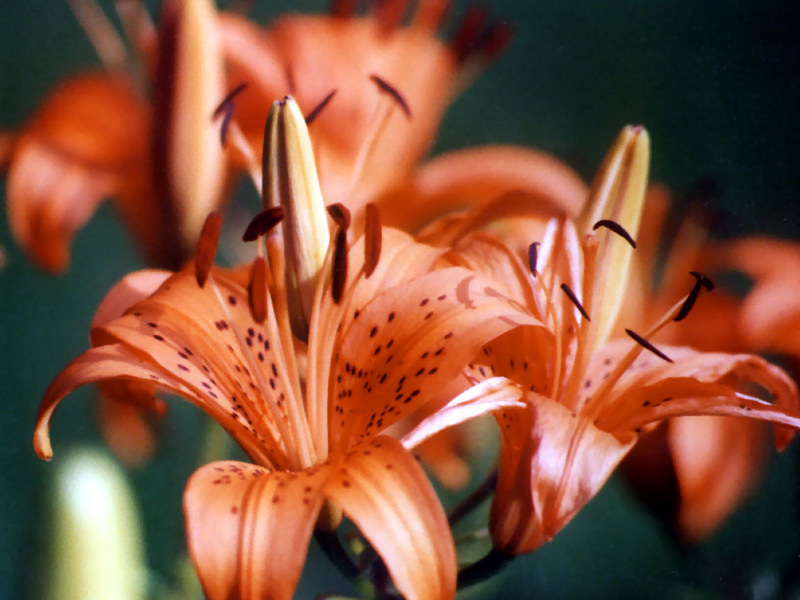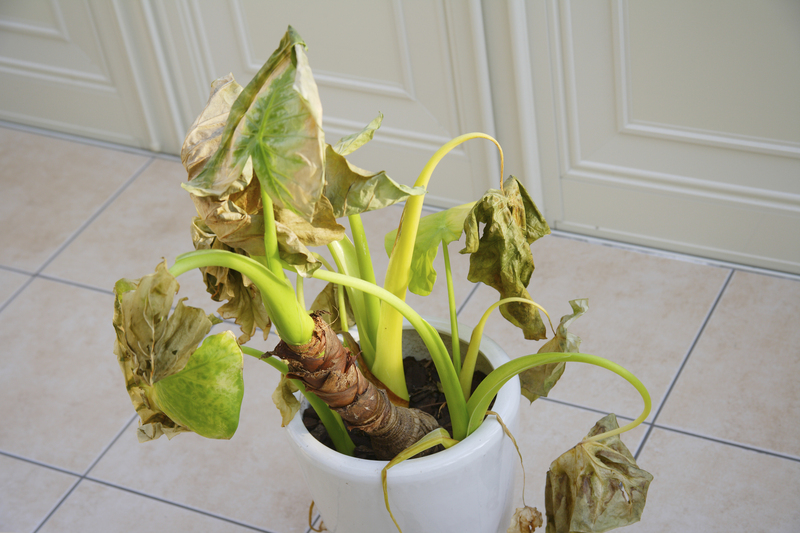Balancing Garden Beauty and Canine Playtime
Posted on 01/10/2025
Balancing Garden Beauty and Canine Playtime: The Ultimate Guide
Gardens add beauty, serenity, and a touch of nature to our homes. For many, these spaces are a sanctuary--yet for our canine companions, they're also a playground. Balancing garden beauty and canine playtime may seem challenging, but with the right strategy, you can achieve a lush, vibrant yard that both you and your furry friend will enjoy.
Why Balancing Garden and Dog Play is Essential
If you're a dog owner and a garden enthusiast, you probably already know the struggles. Exuberant pups can trample delicate plants, dig craters, and leave unsightly pathways on the lawn. However, with some planning, dog-friendly landscaping doesn't mean sacrificing aesthetics. When you find harmony between garden beauty and canine play, you'll have a happier pet, a beautiful outdoor space, and far less frustration!
Benefits of Creating a Pet-Friendly Garden
- Healthier dogs: Safe, enclosed spaces encourage healthy exercise and mental stimulation.
- Beautiful, resilient gardens: Selecting hardy plants and smart layouts reduces damage and garden stress.
- Peace of mind: You won't need to constantly police your pup's every move.
- Increased property value: Well-designed, pet-friendly gardens are attractive to future home buyers.

Understanding Your Dog's Play Behavior
To create an outdoor space that's beautiful and dog compatible, it's essential to learn how and why your dog interacts with your garden.
Common Areas of Concern
- Digging: Dogs dig for fun, comfort, or to cool down. Some breeds have stronger digging instincts than others.
- Running paths: Dogs often create "race tracks" along fences or between favorite spots.
- Chewing: Certain plants, drip irrigation, or garden furniture can fall victim to canine curiosity and teeth.
- Marking and potty habits: Both urine and feces can impact the health of your lawn and plants.
Knowing your dog's habits will help you design a yard where both beauty and play naturally coexist.
Designing the Perfect Garden for Dogs and Owners
With intentional design and plant choices, your garden can thrive and accommodate even the most energetic pup. Here's how to balance canine play with garden aesthetics effectively:
1. Durable, Dog-Friendly Landscaping Materials
- Lawn Alternatives: Hardwearing grass types such as Bermuda, Zoysia, or Fescue can withstand paws and play. Consider artificial turf or clover for high-traffic zones.
- Pathways: Use mulch, gravel, decomposed granite, or flagstone to create sturdy running routes and lure dogs away from sensitive beds.
- Fencing and Borders: Attractive, robust fencing keeps dogs in and out of specific areas. Raised beds and stone edging can protect delicate flowers.
2. Separate Zones for Play and Beautification
Zoning is key to balancing your garden's beauty with your dog's active lifestyle. Designate:
- Play Zone: A clear space for fetch, tunnels, and canine exercise. Shade and a water source are essential.
- Planting Beds: Keep beautiful, delicate flowers and vegetables behind barriers or in raised beds.
- Rest Areas: Consider dog-safe benches and shady nooks for post-play cooling.
3. Choose Dog-Safe Plants and Mulch
- Avoid Toxic Plants: Some garden favorites like oleander, azalea, daffodil, sago palm, and foxglove are poisonous to dogs. Always consult pet-safe plant lists before buying.
- Tough, Resilient Varieties: Choose robust perennials, ornamental grasses, and shrubs like lavender, rosemary, marigolds, and daylilies.
- Mulch Matters: Opt for untreated wood chips or straw. Avoid cocoa mulch--it's toxic to dogs!
4. Address Digging and Marking Issues
- Provide a Digging Pit: Mark a sand or loose-soil area and hide toys/treats there to encourage digging in one spot only.
- Training: Combine rewards-based training with clear garden boundaries for best results.
- Lawn Repair: Reseed or patch urine spots. Train pets to use designated potty areas with gentle guidance.
Maintaining Year-Round Garden Splendor and Pet Fun
Consistent Maintenance
- Regular Clean Ups: Remove waste promptly; it keeps your garden clean and protects plant life.
- Inspect for Damage: Weekly checks for plant or fence damage prevent small problems from escalating.
- Refresh Mulch and Paths: Fluff mulch, refill gravel, and repair pathways as needed to prevent muddy paws.
Multi-Season Planning
Seasonal adjustments help sustain both beauty and function:
- Summer: Add shade sails or plant fast-growing shrubs for cooling shade.
- Winter: Protect roots with extra mulch and maintain a clear play area to avoid slippery mud.
- Spring/Fall: Reseed grass and rotate annual flowers for year-round color and coverage.
Creative Features for a Dog- and Garden-Lover's Paradise
Ready to take your pet-friendly landscaping to the next level? Here are ideas to blend garden attraction with canine comfort:
Water Features
- Add a dog-safe stream or shallow splash pool for cooling and fun.
- Fountains provide sound blocking for nervous pets--and garden elegance.
Dog Tunnels, Jumps, and Enrichment
- Install agility equipment that doubles as modern garden art.
- A simple log tunnel or willow hoop can amuse pups and add rustic charm.
Vertical Gardens and Living Walls
- Grow flowers or herbs upward to save ground space for play.
- Hanging baskets offer color while keeping delicate blooms out of paw's reach.
Common Mistakes in Balancing Garden Beauty and Dog Play
Even the most devoted dog owners sometimes overlook key steps. Here are pitfalls to avoid when integrating dog play with attractive garden design:
- Neglecting breed-specific needs: A tiny terrier and a giant retriever have vastly different habits!
- Poor plant selection: Overly delicate or toxic plants are accident-prone in active yards.
- Ignoring pathways: Dogs will always find the fastest route--plan with them, not against them!
- Forgetting shade and hydration: Dogs need cool spots and accessible water, especially in summer.
- Lack of training or boundaries: Both plants and pets benefit from clear, consistent boundaries and positive reinforcement.
Claim Back Your Outdoor Space: Step-by-Step Plan
-
Observe your dog's habits.
Spend a week watching where your pet runs, digs, and "hangs out." -
Sketch your ideal zones.
Map out restful, playful, and garden areas, focusing plants away from heavy traffic. -
Choose sturdy dog-friendly plants and materials.
Seek advice from your local nursery or vet on safe plant species and pet-friendly mulch. -
Install barriers and clear paths.
Use decorative fencing, hedges, or garden edging to gently steer pups away from sensitive zones. -
Train and reward your pet.
Guide them with positive reinforcement, rewarding desired behaviors and redirecting from unwanted ones. -
Maintain and adapt as needed.
Tweak layout, reseed, or replace plants in response to what works (or not).
Balancing Garden Beauty and Canine Playtime: Real-Life Inspirations
Let's look at how some dog owners have created gorgeous, dog-accommodating gardens for inspiration.
Cottage Garden Retreat
- Raised beds of resilient perennials and herbs, with pea gravel pathways for "zoomies."
- Willow trellis fence shields sensitive plants, while dog-safe benches invite owner and pet relaxation.
Modern Doggie Oasis
- Artificial turf play zone, bordered by lavender and rosemary.
- Limestone stepping stones create a dynamic path for fun and fresh air.
Suburban Family Haven
- Mix of grass and plant islands, all enclosed by decorative fencing.
- Special digging sandpit lined with colorful toys keeps pets delighted and out of the flower beds.

Frequently Asked Questions
- What are the best dog-friendly ground covers?
Try clover, buffalo grass, or hardy turf blends. Artificial turf is great for hard-wear zones and easy cleaning. - How can I prevent my dog from digging up my garden?
Offer a dedicated digging area, use raised beds, reinforce boundaries, and employ positive training techniques. - Which plants are safe for pets?
Opt for marigolds, sunflowers, snapdragons, camellias, and most ferns. Double-check toxicity on each new addition. - Can I have a vegetable garden and a dog?
Yes! Use raised planters, gates, or fencing to separate edible beds from the play area. - How do I repair pet urine spots on the lawn?
Flush spots with water, reseed with resistant grass blends, and train your dog to a designated potty zone.
Conclusion: Achieving Harmony for You and Your Dog
With thoughtful planning, you don't have to choose between garden elegance and tail-wagging fun! The key to balancing garden beauty and canine playtime lies in recognizing your dog's needs, utilizing robust and attractive landscaping elements, and maintaining clear boundaries.
Enjoy the best of both worlds--a lush, vibrant garden and a happy, healthy dog. Not only will your dog thank you, but you'll find new delight in your outdoor oasis, together.
Start today and create your dream landscape where every member of the family--four-legged ones included--can thrive.

